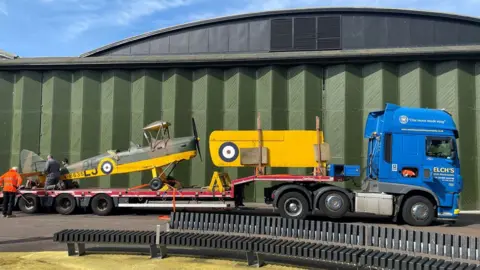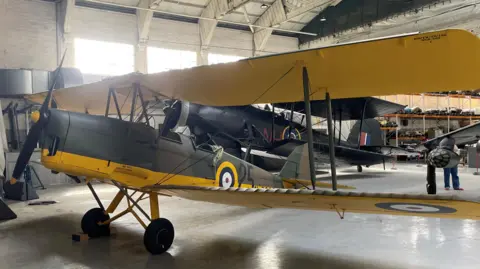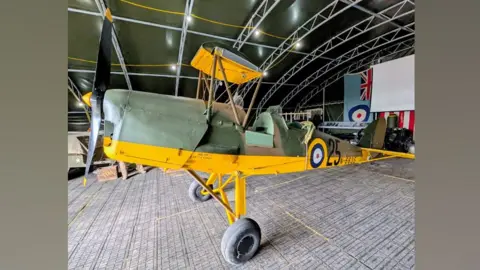Tiger moth finds new home at WW2 airfield museum
 Bottisham Airfield Museum
Bottisham Airfield MuseumA Tiger Moth has found a new home at an airfield where dozens of the aeroplanes were used to train pilots during World War Two.
The biplane has been donated to the Bottisham Airfield Museum, near Cambridge, by the Imperial War Museum in Duxford.
Jason Webb, chair of the airfield's trustees, said he was delighted about the donation, adding Tiger Moths were "top of our wanted list of exhibits".
This type of aircraft was "the first to land at Bottisham in 1940 and the last to take off in 1946", he said. It will go on display at the museum for the first time on Sunday.
Mr Webb said: "We became aware about six months ago that the Imperial War Museum was disposing of it as part of its reorganisation and put a bid in for it - alongside other museums - and they kindly selected ourselves out of all the others."
 Bottisham Airfield Museum
Bottisham Airfield MuseumThe grass airfield at Bottisham was built in 1940 as a satellite for RAF Waterbeach and was initially used by Cambridge-based Tiger Moths from Marshalls (airfield) as a relief landing ground.
The aircraft remained a regular sight in the skies over RAF Bottisham until 1946, serving with the RAF, the USAAF and the RAF Belgian section.
 Bottisham Airfield Museum
Bottisham Airfield MuseumMr Webb said: "De Havilland Tiger Moths were elementary training aircraft, used to teach tens of thousands of pilots to fly, before they went on to fly Lancaster [bombers] or Spitfire [fighter aeroplanes].
"We want to put it on display to tell the story of pilots who flew them."
In particular, he said he wanted to focus on the Tiger Moth's little-known role in Operation Banquet Lights, where the aircrafts were fitted with bombs just in case the Germans invaded England in 1940.
"Luckily, this was not needed as it would have been a one-way trip for the pilots against modern German fighters," he added.
 Bottisham Airfield Museum
Bottisham Airfield MuseumFollow Cambridgeshire news on BBC Sounds, Facebook, Instagram and X.
